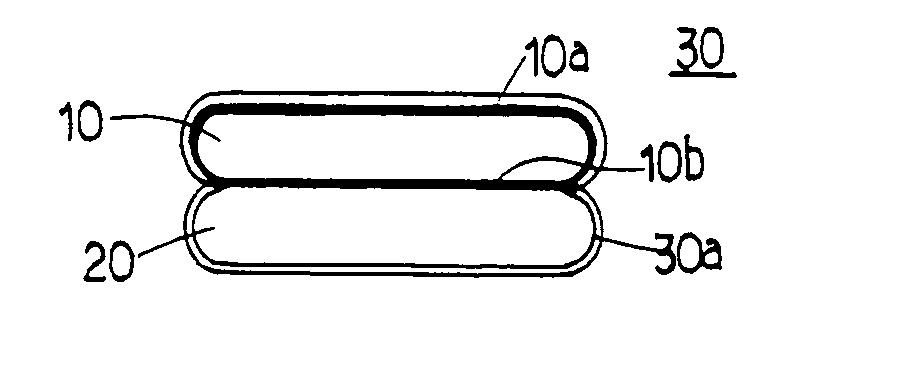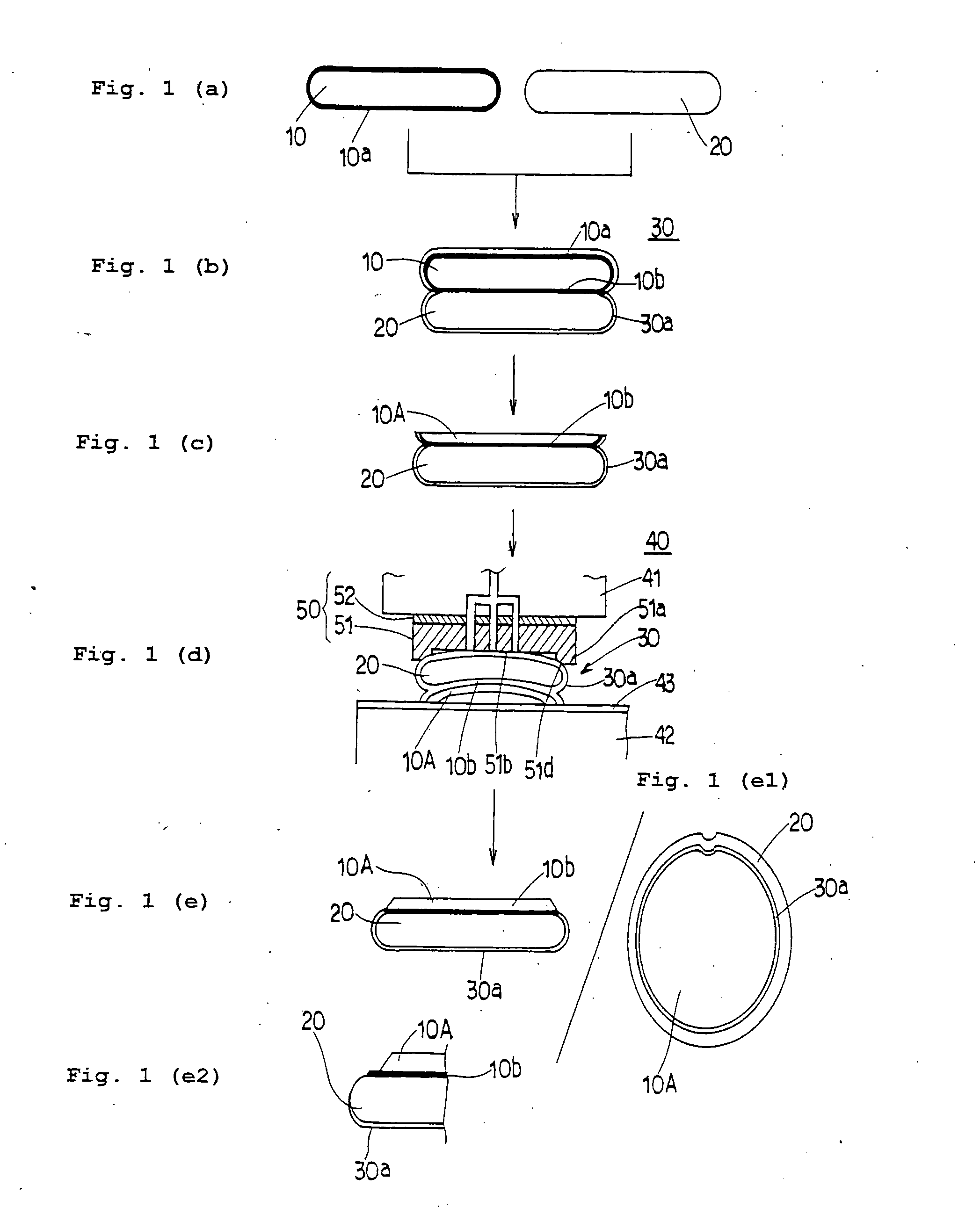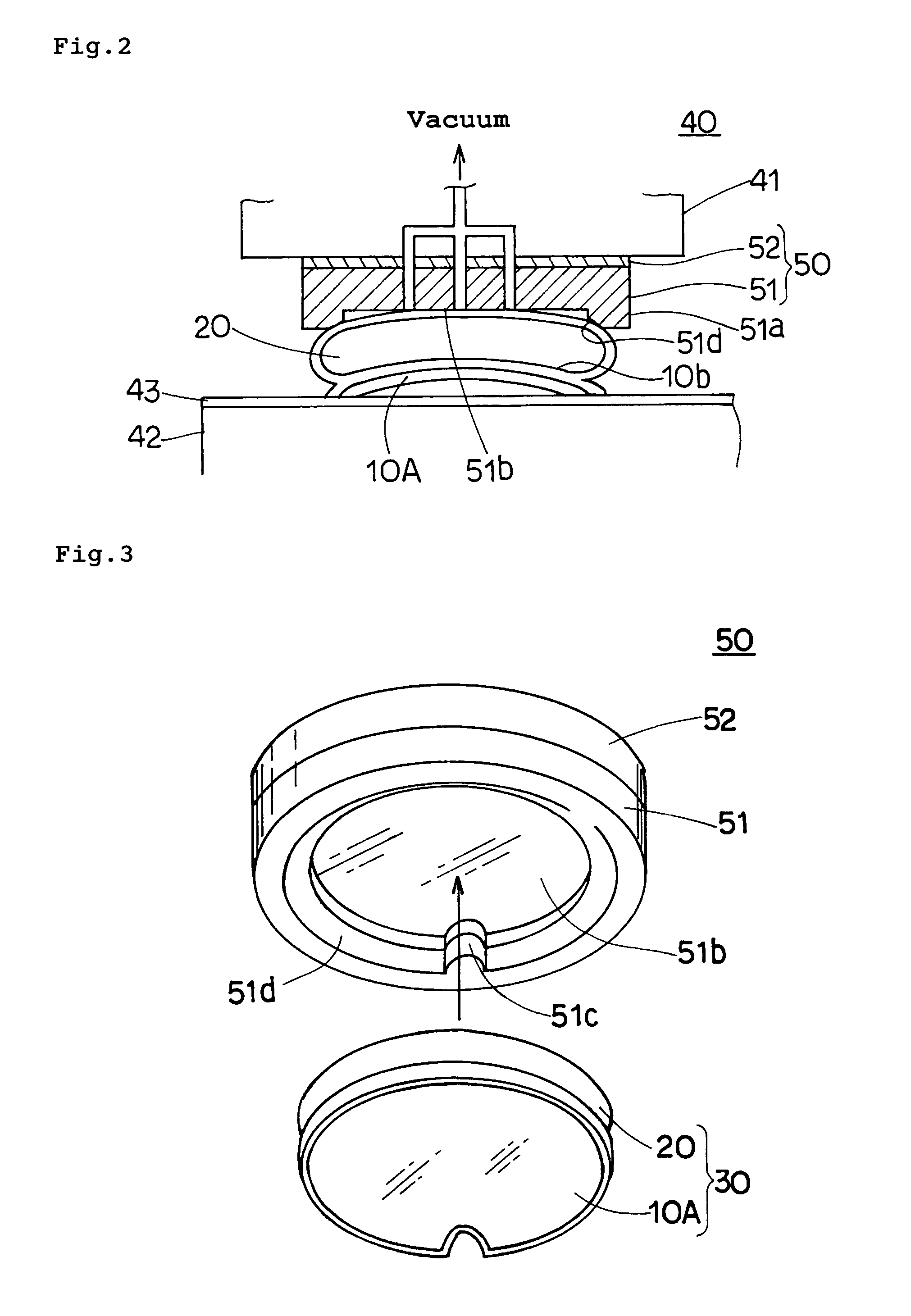Laminated substrate, method of manufacturing the substrate, and wafer outer periphery pressing jigs used for the method
a technology of periphery pressing and laminated substrate, which is applied in the direction of work carriers, electrical appliances, basic electric elements, etc., can solve the problems of increasing manufacturing costs, long manufacturing time to be required, and difficulty in providing periphery grinding along the notch by one-time grinding, so as to prevent contamination and/or scratching, reduce the number of manufacturing processes and reduce the manufacturing time of the bonding substrate
- Summary
- Abstract
- Description
- Claims
- Application Information
AI Technical Summary
Benefits of technology
Problems solved by technology
Method used
Image
Examples
first embodiment
[0153] Preferred embodiments of the present invention will now be described with reference to the attached drawings. It is to be appreciated that the present invention is not limited to those embodiments. First of all, referring to FIG. 1 through FIG. 16, a first embodiment will be described.
[0154] As shown in FIG. 1, first of all, a single crystal silicon ingot is pulled up by using the Czochralski method, and then thus obtained single crystal silicon ingot is applied to a series of processing consisting of block cutting, notch processing, slicing, beveling, lapping, etching and mirror polishing to prepare a mirror finished active layer wafer 10 with a notch having a thickness of 725 μm and a diameter of 200 mm. On the other hand, by using the same production processes as those applied to this active layer wafer 10, a mirror finished supporting substrate wafer 20 with notch having the same thickness and the same diameter therewith is prepared (FIG. 1(a)). It is to be noted that the...
second embodiment
[0185] the present invention will now be described with reference to FIG. 17 through FIG. 22.
[0186] The feature of the second embodiment resides in a point that after the periphery removing polishing in the first embodiment, a partial periphery removing polishing process is applied, in which only a portion in the circumferential direction of the peripheral region of the bonding wafer 30 is polished again (i.e., the second polishing) so as to remove the active layer 10A in that portion.
[0187] A specified portion of the bonding wafer 30 subject to the second polishing is the portion in the vicinity of the orientation flat. By applying such a partial periphery removing polishing, a width, d, of a terraced section in the vicinity of the orientation flat of the supporting substrate wafer 20 is extended, and the hard laser mark, M, may be printed on that extended terraced section (FIG. 19). For partial periphery removing polishing, a partial wafer removing pressing jig 60 is used.
[0188]...
PUM
 Login to View More
Login to View More Abstract
Description
Claims
Application Information
 Login to View More
Login to View More - R&D
- Intellectual Property
- Life Sciences
- Materials
- Tech Scout
- Unparalleled Data Quality
- Higher Quality Content
- 60% Fewer Hallucinations
Browse by: Latest US Patents, China's latest patents, Technical Efficacy Thesaurus, Application Domain, Technology Topic, Popular Technical Reports.
© 2025 PatSnap. All rights reserved.Legal|Privacy policy|Modern Slavery Act Transparency Statement|Sitemap|About US| Contact US: help@patsnap.com



